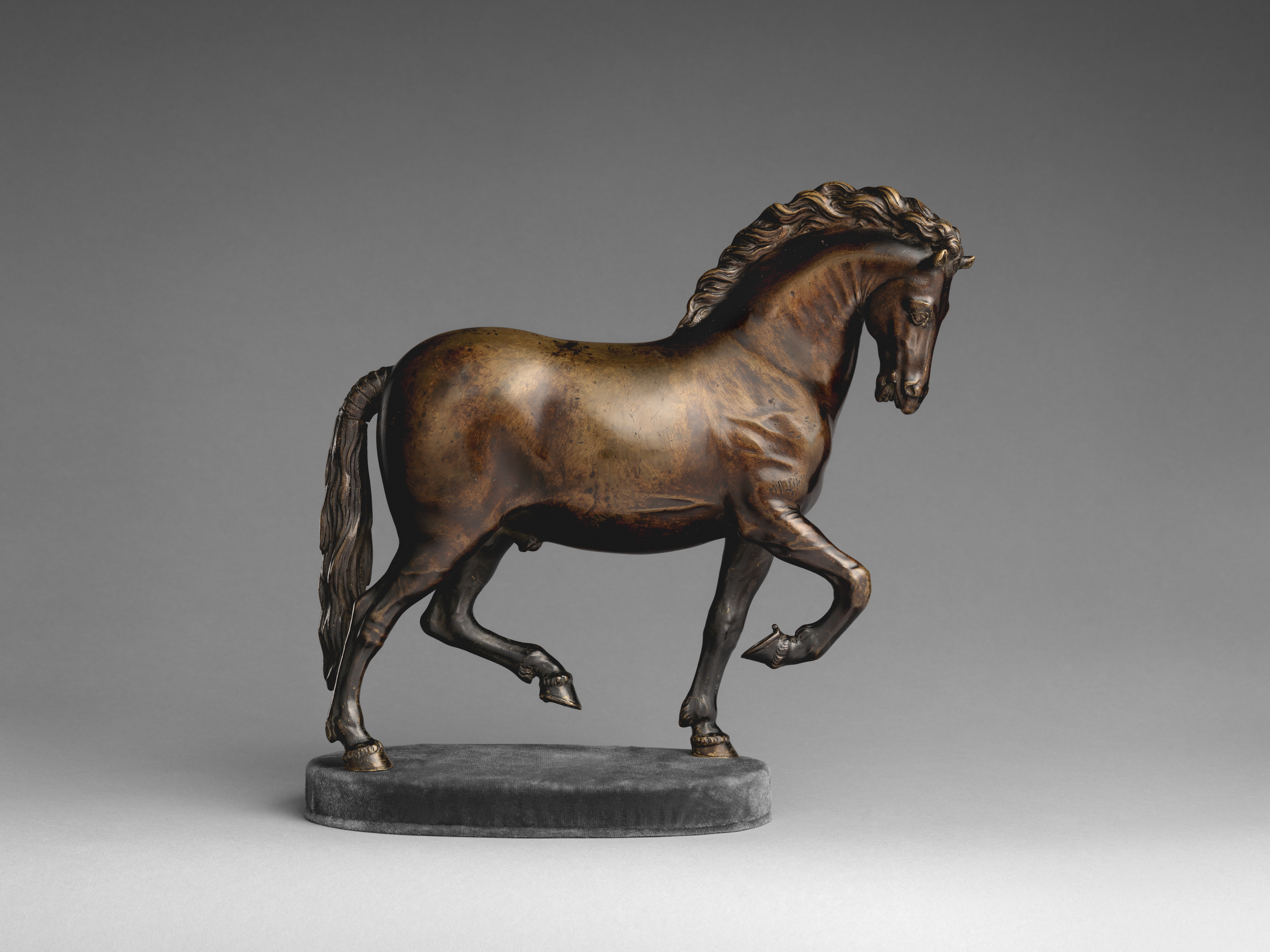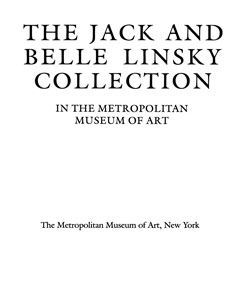Trotting horse
After a model by Giambologna Netherlandish
The Trotting Horse (A) arrived at the Met in 1982 as part of the Jack and Belle Linsky bequest and was published in 1984 as after a model by Giambologna. The Linskys had demonstrated a particular interest in the work of this sculptor over their years of collecting, including the Hercules with the Erymanthian Boar and The Crucified Christ (cats. 128, 133), both also presumed to derive from Giambologna models.
Indeed, the Linsky horse can be grouped with a series of bronzes traditionally associated with Giambologna and his workshop. This corpus was systematically discussed for the first time in the catalogue published for the Giambologna exhibition held in 1978. The catalogue included two pacing stallions “similar in composition to the horse of the equestrian monument of Cosimo I” (made for Piazza della Signoria, Florence, between 1587 and 1593), but different from the confirmed “type” of another group of horses likewise attributed to Giambologna.[1] Of this latter group, the best example is the autograph bronze in the Bargello recorded in 1588 among the Medici possessions held at the Casino di San Marco (p. 00, fig. 118a).[2] The two types of composition vary in the shape and length of the mane, the position of the ears, and the presence or absence of horse tack.
In 1987, Charles Avery, noting that a Giambologna autograph of the model adopted in the Linsky horse had never been found, argued that the large production of similar casts should be attributed to Antonio Susini, who would therefore be the one responsible for the widespread diffusion of the popular prototype. The composition’s fame is attested in striking visual evidence such as the oil painting by Willem van Haecht depicting the gallery of Cornelis van der Geest (Rubenshuis, Antwerp), in which a pacing horse is prominently displayed among a group of bronzes on a table in the center foreground.[3] The list of replicas recently updated by Patricia Wengraf includes the Linsky horse.[4]
However, Richard Stone’s technical analysis of our horse challenges the presumption of a Renaissance provenance.[5] A number of aspects of the facture point to a much later date. The alloy is an unusual amalgam of brass with a high percentage of zinc. The core is plaster. The tail was cast separately and attached by means of an internal threaded lug, inserted into two threaded holes. Both holes end in neat cones, and both cones have identical apical angles, which suggests the use of a modern twist drill. The imprecise surface treatment—particularly of the tail, mane, and head—and the almost complete absence of cold work support a later dating as well.
Similarly, the small Horse (B) entered the museum in 1924 as a Renaissance bronze, but casting peculiarities say otherwise.[6] Inspired by the same typology that influenced the Trotting Horse, the statuette is made of a low-alloy leaded brass and the core is plaster, features that set it apart from Florentine production. Two screw plugs, one on the horse’s chest and the other on its abdomen, have a broad, short shape, very fine threads and—most unusual for the seventeenth century—tips that have been neatly turned to a shallow cone. It is therefore likely that we find ourselves with another late casting of a celebrated model by Giambologna.
-TM
Footnotes
(For key to shortened references see bibliography in Allen, Italian Renaissance and Baroque Bronzes in The Metropolitan Museum of Art. NY: The Metropolitan Museum of Art, 2022.)
1. C. Avery and Radcliffe 1978, cats. 151 (V&A, A.148-1910), TK (Royal Collection, RCIN 35467).
2. Dimitrios Zikos in Paolozzi Strozzi and Zikos 2006, p. 275, cat. 60.
3. C. Avery 1987, p. 268, no. 132; see also C. Avery 2000, p. 12.
4. Wengraf 2014, pp. 134–35.
5. R. Stone/TR, March 29, 2011.
6. Ibid.
Due to rights restrictions, this image cannot be enlarged, viewed at full screen, or downloaded.
This artwork is meant to be viewed from right to left. Scroll left to view more.





